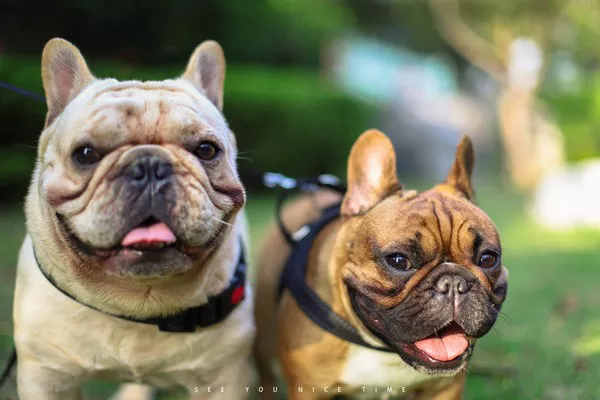Pugs, with their distinctive wrinkled faces and charming personalities, have a penchant for endearing yet quirky behaviors. Among these, the phenomenon of Pugs spinning in circles often captures the attention and amusement of their owners. In this comprehensive exploration, we delve into the various factors that contribute to this peculiar behavior, shedding light on why Pugs exhibit the captivating and sometimes perplexing act of spinning.
Inherited Traits: The Genetic Predisposition to Spinning in Pugs
The question of why Pugs spin finds its roots in the breed’s genetic makeup. Pugs belong to a group of toy breeds known for their unique physical characteristics and playful dispositions. The tendency to spin can be traced back to their genetic predisposition for energetic and sometimes eccentric behavior. Understanding the genetic underpinnings of a Pug’s inclination to spin lays the foundation for unraveling the mystery behind this endearing conduct.
Playful Expression: How Pug Spinning Reflects Joy and Excitement
One of the primary reasons behind Pugs spinning in circles is their innate playfulness and exuberance. When a Pug is excited or joyful, the natural instinct is to express these emotions through physical movement. Spinning becomes a spontaneous and delightful expression of their exuberance, a way for Pugs to release pent-up energy and revel in the sheer joy of the moment.
Sensory Exploration: The Role of Spinning in a Pug’s Investigation
Pugs, equipped with a keen sense of curiosity, often use spinning as a form of sensory exploration. When a Pug spins, it allows them to survey their surroundings from different angles and gather information through their acute sense of smell. This behavior is not merely a whimsical display but a purposeful means of understanding their environment and engaging with it in a unique and dynamic way.
Communication and Connection: Spinning as a Social Interaction for Pugs
In the intricate language of canine communication, spinning serves as a social signal for Pugs. When interacting with other dogs or humans, a spinning Pug conveys enthusiasm, friendliness, and a desire for connection. This social spinning is a charming way for Pugs to express their affectionate nature and initiate positive interactions with those around them, further strengthening the bond between Pug and owner.
Release of Excess Energy: How Spinning Serves as a Physical Outlet for Pugs
Pugs are known for their bursts of energy, and spinning provides them with a physical outlet to release this excess vigor. Whether it’s in response to excitement, anticipation, or just a surge of playful energy, the act of spinning allows Pugs to channel their exuberance in a constructive manner. This serves not only as a release for the Pug but also as entertainment for delighted onlookers.
Behavioral Response to Stimuli: Understanding Triggers for Pug Spinning
Various stimuli can trigger Pug spinning, and understanding these triggers is key to comprehending the behavior. Changes in the environment, the arrival of visitors, the anticipation of meals or walks – these stimuli can elicit spinning as a Pug’s way of expressing heightened emotions or responding to specific events. Recognizing and interpreting these triggers is fundamental in deciphering the motive behind a Pug’s spins.
Expression of Happiness: The Joyful Dance of Pug Spinning
For Pugs, spinning isn’t just a physical act; it’s a joyful dance that reflects their happiness. When content and pleased, Pugs may engage in spinning as a celebratory gesture. This dance of joy is an authentic expression of their positive emotional state, providing a heartwarming spectacle for those fortunate enough to witness their exuberant spins.
Training and Positive Reinforcement: Nurturing and Guiding Pug Spinning Behavior
While Pug spinning is often a natural and harmless behavior, owners may wish to guide or modify it through training. Positive reinforcement techniques, such as rewarding calm behavior and redirecting excessive spinning, can be effective. The key lies in understanding the underlying motivations for spinning and channeling this behavior in a way that aligns with both the Pug’s natural instincts and the owner’s preferences.
Environmental Influences: How Surroundings Impact Pug Spinning
The environment plays a significant role in influencing a Pug’s spinning tendencies. Changes in surroundings, the introduction of new elements, or even alterations in routine can prompt spinning behavior. Recognizing the impact of the environment on a Pug’s spins allows owners to create a comfortable and stimulating space that accommodates their furry friend’s need for both exploration and routine.
Stress and Anxiety: Addressing Pug Spinning as a Response to Discomfort
While spinning is often associated with joy, it can also be a response to stress or anxiety in Pugs. Changes in the household, unfamiliar situations, or loud noises may induce spinning as a coping mechanism. Identifying sources of stress and providing a secure and reassuring environment is crucial for minimizing spinning associated with discomfort.
Age-Related Spinning: Exploring Changes in Pug Behavior as They Mature
As Pugs age, their behavior may undergo changes, and spinning tendencies can be influenced by various factors. Understanding age-related shifts in behavior allows owners to adapt and provide appropriate care, ensuring that spinning remains a natural and enjoyable aspect of a Pug’s overall demeanor.
Conclusion
In conclusion, the act of Pugs spinning is a delightful and multifaceted aspect of their behavior. From genetic predispositions and social expressions to sensory exploration and the release of excess energy, Pug spinning encapsulates a range of emotions and instincts. Embracing and understanding this whimsical behavior fosters a deeper connection between Pug and owner, allowing for shared moments of joy, excitement, and the unique dance that is the Pug spin.


